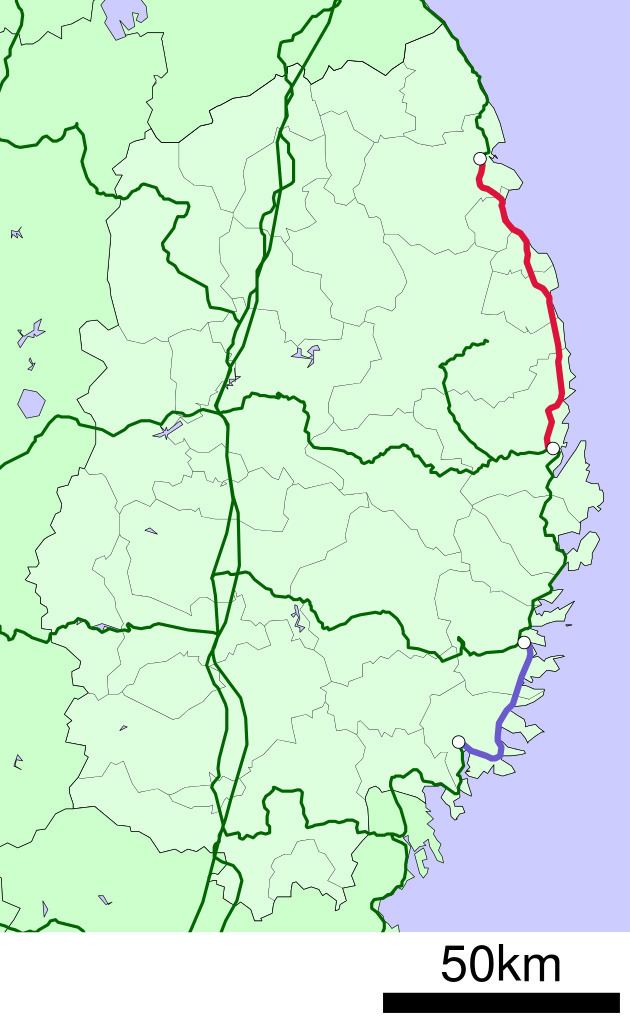Native name 北リアス線 Termini MiyakoKuji Line length 71.0 km (44.1 mi) Founded 1981 | Number of tracks Single track Stations 16 | |
 | ||
CEO Masahiko Mochizuki (Jun 2010–) | ||
The sanriku railway story
The Sanriku Railway (三陸鉄道, Sanriku Tetsudō) is a railway company in Iwate Prefecture in northern Japan. The company and its lines are also known as Santetsu (三鉄). The company was founded in 1981, as the first "third sector" (half public, half private) railway line in the country, excluding special cases such as freight railways in seaports. Its lines are former Japanese National Railways (JNR) lines, that were going to be closed. Santetsu acquired these lines in 1984. The company also operates a travel agency and other businesses.
Contents
- The sanriku railway story
- Japan visual clip series sanriku railway fudai to kuji
- History
- 2011 earthquake and tsunami damage
- References
Japan visual clip series sanriku railway fudai to kuji
History
The Japanese National Railways (JNR) opened the Miyako to Taro section in 1972 and the Kuji to Fudai section in 1975. It constructed the Taro to Fudai section, and transferred the entire line to Sanriku on the day it opened in 1984. The line features 42 tunnels, including the Masaki (6,532 m) and Omoto (5,174 m) tunnels, both opened in 1984.
History
JNR opened the Sakari to Ryori section in 1970, extending the line to Yoshihama in 1973. It constructed the section to Kamaishi and transferred the entire line to Sanriku on the day it opened in 1984. The line features 20 tunnels.
2011 earthquake and tsunami damage
Both lines were heavily damaged by the 2011 Tōhoku earthquake and tsunami. The two lines suffered damage at 300 locations, including damage to station buildings and bridges. The tsunami washed away 5.8 km of railway tracks on the lines. Full restoration of service on the lines was completed in April 2014.
Diesel railcars damaged by the earthquake and tsunami were replaced by three new diesel railcars funded by Kuwait. The new cars were introduced in January 2014.
